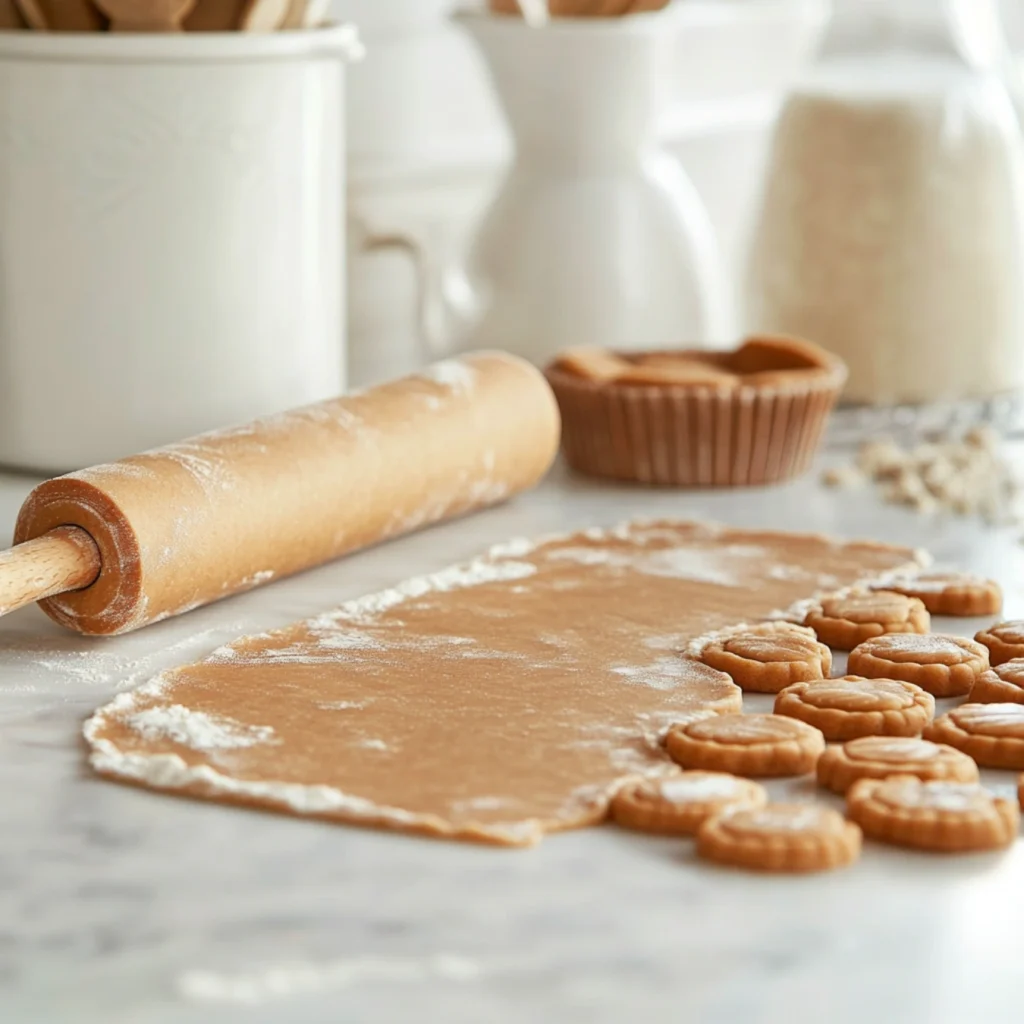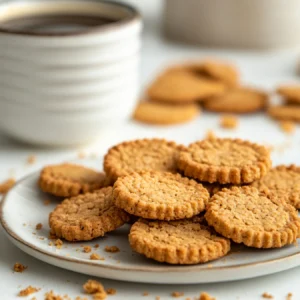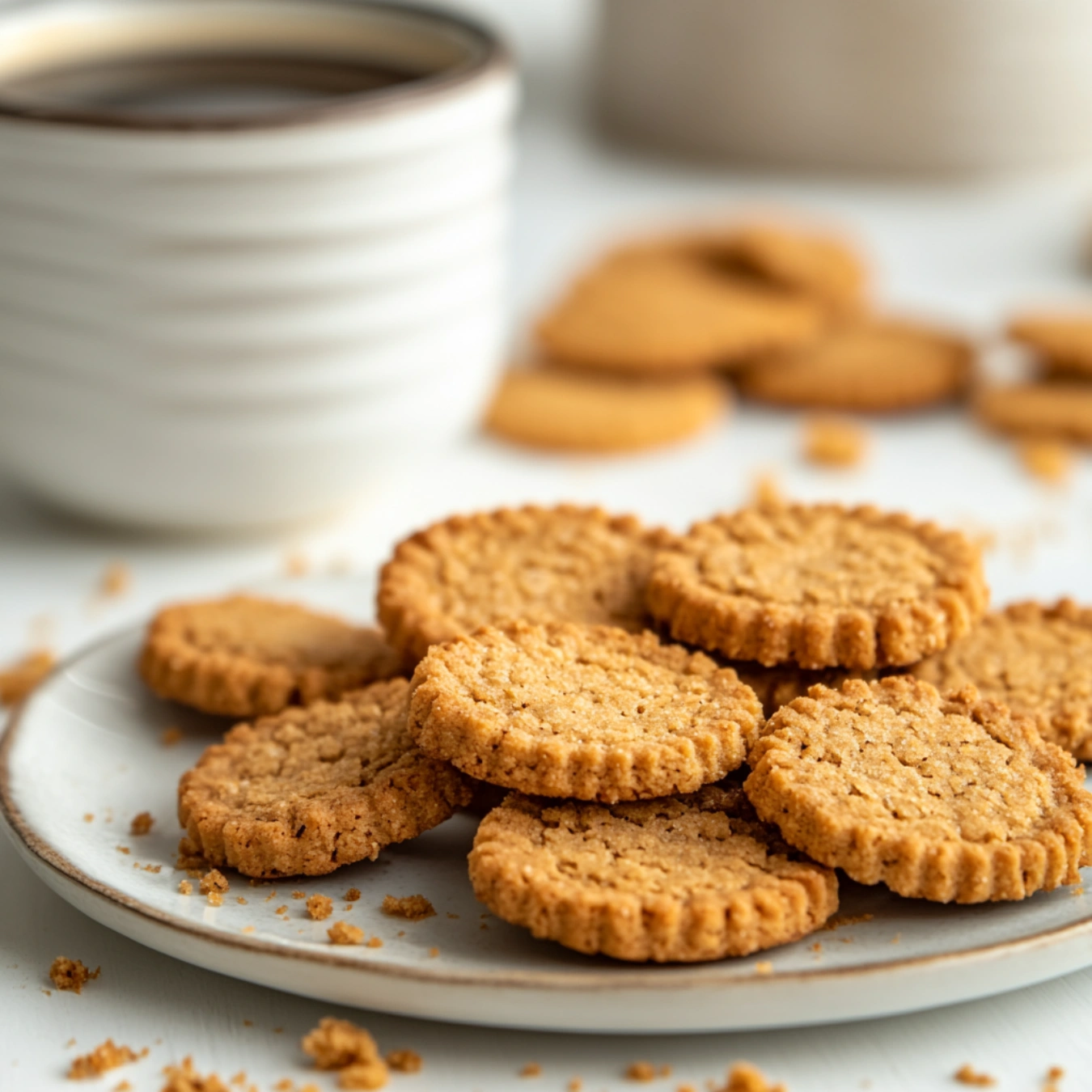Get ready for your new favorite cookie if you love Biscoff Cookie Recipe butter! These soft, chewy Biscoff butter cookies are filled with warm cinnamon flavor and crunchy crumbles of Biscoff biscuits. With a melt-in-your-mouth texture and just the right chewiness, they’re perfect with a hot cup of coffee, tea, or milk a real treat for any occasion!
Table of Contents
Why You Will Love This Recipe
- ✔ Soft & Chewy Perfection : Thanks to Biscoff cookie butter and brown sugar, these cookies stay irresistibly soft and moist.
- ✔ Packed with Biscoff Flavor : Cookie butter + crushed Biscoff cookies = next-level deliciousness!
- ✔ Super Easy to Make : This one-bowl wonder requires no chilling!
- ✔ Perfect for Coffee Lovers : The warm, spiced flavor pairs perfectly with your favorite coffee or tea.
Ingredients
Dry Ingredients:
- All-Purpose Flour : The foundation for structure and softness.
- Baking Soda : Helps the cookies stay light and rise slightly.
- Salt : Enhances sweetness and sharpens flavors.
- Cinnamon : Adds a warm, cozy touch that complements Biscoff perfectly.
Wet Ingredients:
- Unsalted Butter (Softened) : Adds richness and moisture.
- Biscoff Cookie Butter : The star ingredient creamy, spiced, and absolutely addictive!
- Brown Sugar : Keeps cookies chewy and adds deep caramel-like flavor.
- Granulated Sugar : Balances texture for a perfectly soft bite.
- Large Egg : Binds the dough and enhances tenderness.
- Vanilla Extract : Adds warmth and depth of flavor.
Mix-Ins:
- Crushed Biscoff Cookies : Adds extra crunch and a double dose of cookie butter flavor.
👉 The complete ingredient list with measurements is in the recipe card below!
How to Make Mama Kelce’s Biscoff Butter Cookies
Step 1: Preheat Oven & Prepare Baking Sheet
1️⃣ Preheat your oven to 350°F (175°C).
2️⃣ Line a baking sheet with parchment paper to prevent sticking.
Step 2: Mix the Dry Ingredients
3️⃣ In a medium bowl, whisk together: ✅ Flour
✅ Baking soda
✅ Salt
✅ Cinnamon
Set aside while you prepare the wet ingredients.
Step 3: Cream Butter & Sugars
4️⃣ In a large mixing bowl, beat together: ✅ Softened butter
✅ Biscoff cookie butter
✅ Brown sugar
✅ Granulated sugar
Mix for about 2 minutes until creamy and smooth.
5️⃣ Add the egg and vanilla extract, stirring until fully incorporated.
Step 4: Combine Wet & Dry Ingredients
6️⃣ Gradually mix in the dry ingredients until just combined.
7️⃣ Fold in crushed Biscoff cookies for extra texture and flavor.
Step 5: Scoop & Bake
8️⃣ Scoop dough onto the prepared baking sheet, spacing 2 inches apart.
9️⃣ Bake for 10-12 minutes, until the edges are lightly golden but the centers still appear soft.
Step 6: Cool & Enjoy!
🔟 Let cookies cool on the baking sheet for 5 minutes, then transfer to a wire rack.
1️⃣1️⃣ Enjoy warm, or drizzle with extra melted Biscoff spread for an extra decadent treat!

Pro Tips for Perfect Biscoff Cookies
✔ Don’t Overmix : Overmixing makes cookies tough instead of soft and chewy.
✔ Slightly Underbake for Extra Chewiness : Remove cookies when centers still look soft; they will firm up as they cool.
✔ Use Smooth Biscoff Cookie Butter : Guarantees a perfectly creamy consistency.
✔ Chill the Dough for Thicker Cookies : If you prefer thicker cookies, chill the dough for 30 minutes before baking.
✔ Sprinkle Extra Biscoff Crumbles : For a bakery-style look and more flavor!
How to Serve
These incredible Biscoff butter cookies pair perfectly with:
☕ A Hot Drink : Enjoy with coffee, chai tea, or vanilla latte.
🍦 As a Dessert : Serve alongside a scoop of vanilla ice cream.
🥛 Dipped in Milk : Because cookies and milk = happiness!
🍯 Drizzled with Extra Biscoff Butter : Warm some extra cookie butter and drizzle for next-level indulgence.
For more dessert inspiration, check out this unique cookie recipe collection.
Make-Ahead & Storage
Storing Leftovers
- Room Temperature: Keep cooled cookies in an airtight container for up to 5 days.
- To Keep Soft: Store with a slice of bread to maintain moisture.
Freezing Cookie Dough
- Shape the dough into balls and freeze on a baking sheet.
- Transfer to a zip-top bag and freeze for up to 3 months.
- Bake from frozen at 350°F (175°C) for 12-14 minutes no need to thaw!
Freezing Baked Cookies
- Cool completely, then pack cookies in a freezer-safe bag.
- Store for up to 3 months.
- Thaw at room temperature or microwave for 10-15 seconds.

FAQs
1. Can I use crunchy Biscoff spread instead of smooth?
Yes! Crunchy Biscoff spread adds extra texture and crunch to the cookies.
2. Can I make these cookies gluten-free?
Absolutely! Swap all-purpose flour for a 1:1 gluten-free baking mix. Make sure your Biscoff cookies are gluten-free as well.
3. Can I add white chocolate chips?
Yes! White chocolate chips pair beautifully with the warm, spiced flavors of Biscoff.
4. What can I use instead of Biscoff spread?
If you don’t have Biscoff, try Trader Joe’s Speculoos Cookie Butter or even almond butter—though the taste will be slightly different.
Conclusion
These Mama Kelce-inspired Biscoff Butter Cookies are the perfect blend of chewy, buttery, and spiced goodness. Whether you enjoy them as a snack, dessert, or coffee companion, they’re sure to be a favorite.
🔥 So grab that jar of Biscoff and get baking! 🍪✨

Mama Kelce’s Biscoff Butter Cookies
Equipment
- Mixing Bowls
- Hand Mixer or Stand Mixer
- Baking sheet
- Parchment Paper
- Cookie Scoop or Spoon
- Wire rack
Ingredients
- 1 ¾ cups all-purpose flour
- 1 teaspoon baking soda
- ½ teaspoon salt
- 1 teaspoon cinnamon
- ½ cup unsalted butter softened
- ¾ cup Biscoff cookie butter
- ½ cup brown sugar packed
- ¼ cup granulated sugar
- 1 large egg
- 1 teaspoon vanilla extract
- ½ cup crushed Biscoff cookies
Instructions
- Preheat oven to 350°F (175°C) and line a baking sheet with parchment paper.
- In a medium bowl, whisk together flour, baking soda, salt, and cinnamon. Set aside.
- In a large bowl, beat butter, Biscoff cookie butter, brown sugar, and granulated sugar until creamy and smooth.
- Add the egg and vanilla extract, mixing until well incorporated.
- Gradually add the dry ingredients to the wet ingredients, stirring until fully combined.
- Fold in crushed Biscoff cookies for extra texture and flavor.
- Scoop dough onto the baking sheet using a tablespoon, spacing them about 2 inches apart.
- Bake for 10-12 minutes or until edges are lightly golden.
- Let cookies cool on the baking sheet for 5 minutes before transferring them to a wire rack to cool completely.

